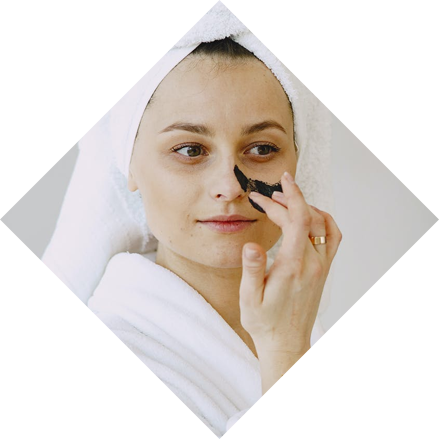Skin Allergies

Need An Appointment?
Drop Your Number here
Skin Allergies: Causes, Symptoms, and Effective Treatment Options
Skin allergies are one of the most common skin conditions, affecting people of all ages. They occur when the immune system reacts abnormally to a substance (called an allergen) that is usually harmless to most people. This reaction leads to symptoms such as itching, redness, swelling, rashes, or blisters. Skin allergies can range from mild irritation to severe inflammation, but with the right diagnosis and treatment, they can be effectively managed.
Causes of Skin Allergies
Several factors can trigger allergic reactions on the skin. The most common causes include:
-
Contact with Irritants or Allergens:
Substances like detergents, perfumes, soaps, cosmetics, latex, and nickel (found in jewelry or belt buckles) can cause allergic skin reactions. -
Insect Bites or Stings:
Reactions to bites or stings from mosquitoes, bees, or other insects can cause localized redness, swelling, and itching. -
Certain Foods and Medications:
Foods like peanuts, shellfish, eggs, or medications such as antibiotics can trigger allergic reactions that show up on the skin as rashes or hives. -
Environmental Factors:
Pollen, dust mites, mold, and pet dander are common allergens that can lead to skin reactions, especially in people with sensitive skin. -
Genetic Predisposition:
Skin allergies often run in families. Individuals with conditions like eczema or asthma are more likely to develop allergic reactions. -
Stress and Immune Imbalance:
Emotional stress and weakened immunity can worsen allergic skin responses or trigger flare-ups.
.jpg)
Treatment for Skin Allergies
Treatment aims to relieve symptoms, reduce inflammation, and prevent recurrence. Depending on the type and severity, your dermatologist may recommend:
1. Topical Medications
-
Corticosteroid creams or ointments reduce redness and itching.
-
Moisturizers help repair the skin barrier and prevent dryness.
-
Calamine lotion soothes irritation and itching.
2. Oral Medications
-
Antihistamines (like cetirizine or loratadine) relieve itching and allergic reactions.
-
Corticosteroid tablets for severe inflammation.
3. Immunotherapy
For recurring allergies, allergen immunotherapy (allergy shots or tablets) may help build tolerance to triggers.
4. Home Remedies
-
Apply cool compresses to soothe itching.
-
Avoid scratching to prevent infection.
-
Use fragrance-free soaps and moisturizers.
-
Take oatmeal or aloe vera baths for relief.
Need An Appointment?
Drop Your Number here
Symptoms of Skin Allergies
The symptoms of a skin allergy may vary depending on the cause, but common signs include:
-
Itching or burning sensation
-
Redness or inflammation
-
Rash or hives
-
Swelling
-
Flaky, scaly, or dry skin
-
Small bumps or blisters that may ooze or crust
Symptoms can appear immediately after exposure or take several hours or days to develop.
Types of Skin Allergies
Skin allergies can appear in different forms, depending on the type of allergen and individual sensitivity. The main types include:
1. Contact Dermatitis
Occurs when the skin comes into direct contact with an allergen or irritant.
-
Irritant Contact Dermatitis: Caused by harsh chemicals or detergents.
-
Allergic Contact Dermatitis: Triggered by substances like perfumes, metals, or plants (e.g., poison ivy).
Symptoms: Redness, itching, blisters, and dry, scaly skin.
2. Atopic Dermatitis (Eczema)
A chronic condition causing itchy, inflamed skin. It’s often linked to asthma or hay fever.
Symptoms: Dry, rough patches, severe itching, and redness, especially on elbows, knees, and face.
3. Urticaria (Hives)
Characterized by raised, red, itchy welts that may appear suddenly due to allergic triggers like food, insect bites, or medications.
Symptoms: Swelling, itching, and red welts that move around different parts of the body.
4. Angioedema
A deeper form of swelling beneath the skin, often occurring along with hives.
Symptoms: Swelling around the eyes, lips, hands, or throat; can sometimes cause breathing difficulties.
5. Photodermatitis
Occurs when sunlight interacts with chemicals in certain lotions or medications, leading to an allergic skin reaction.
Symptoms: Redness, rash, and blistering after sun exposure.
Prevention Tips
To prevent skin allergies and flare-ups:
-
Identify and avoid known allergens.
-
Use gentle, fragrance-free skincare products.
-
Wash new clothes before wearing them.
-
Wear gloves when handling cleaning products.
-
Keep skin moisturized daily.
-
Protect skin from excessive sun exposure.
-
Maintain a balanced diet and stay hydrated.
When to See a Dermatologist
Consult a dermatologist if:
-
Symptoms persist for more than a few days.
-
The rash spreads or becomes painful.
-
You experience swelling in the face or throat.
-
Over-the-counter treatments don’t work.
Prompt medical attention ensures proper diagnosis and effective treatment.
Conclusion
Skin allergies can be uncomfortable but are highly manageable with the right care and treatment. Identifying triggers, maintaining good skincare habits, and following professional advice are key to keeping your skin healthy and allergy-free. If you experience recurring allergic reactions, consult a dermatologist for personalized diagnosis and long-lasting relief.
Patient Testimonials

She's the best skin doctor I've come across so far. she listens patiently, gives the prominent treatment accordingly. Guys looking for skin treatment must visit Dr Nidhi Bansal, you will get satisfying results👍
- Sanya Sayyed

I consulted with Dr Nidhi Bansal after one of my friend suggested. The doctor is very
calm and well versed with the solutions. I definitely liked the way He made me
understand the issues of my hair sclap.
I am very happy with my own experience with
her and the treatment provided amazing hence I would highly recommend to this doctor for
any skin or hair disease.
- Anu Verma

I was suffering from severe acne on my face. Dr Nidhi told me in detail about the treatment options and customized the procedures for my face. Within one day my redness and acne has reduced by 90%. I am so happy with the results and would recommend Dr Nidhi to everyone for their skin and hair problems.
Priya Rajput

Best doctor I always go to Dr Nidhi skin clinic whenever i have any skin problems . Dr. Nidhi is such a humble + trusted doctor I was dealing with pimples and scars from 6 years, someone told me about Dr Nidhi .I having been taking treatment from 2 months .my acne has gone for forever ,thanks for giving me normal skin best dermatologist in jaipur I got 100 % results , M bhut jayda preshan tha acne , blackheads whiteheads se ,mera face bhut khrab dikhta tha bhut guilty feel hota tha logo ko face krne m now I m confident .thank you doctor
Neeraj Yogi



Patient's Testimonials









